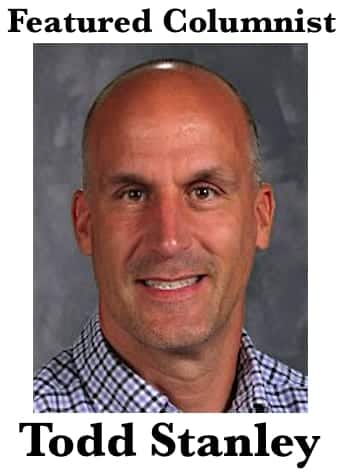Table of Contents
Which one is better for gifted kids? When it comes to challenging gifted students, there is that age-old debate of which is better; acceleration or enrichment? Both are used to challenge students that are capable of higher levels of learning, but is one more effective than the other?
Understanding Acceleration
Before we can begin the debate, it is important to understand what each of these terms entails. Acceleration, just like its namesake, means going faster. In the classroom, that can take on a bunch of different forms. It could mean compacting the curriculum so that students are getting multiple years of content in a single year. It could mean grade skipping, where a student who is a 5th grader is moved up to the 6th grade because she shows the ability to handle this next level. Sometimes this acceleration can be a single subject. What this means is that 5th grader might take 5th grade ELA, Social Studies, and Science, but goes to the 6th-grade class for math. It could also be early entrance to kindergarten or graduating from high school early. No matter what the method, the essential idea of acceleration is to allow students to learn at the speed and level that best matches their academic abilities (Davis & Rimm, 2004). Sometimes this means skipping content, but the idea is that this student already understands the content enough and should not have to repeat it anyway.
Understanding Enrichment
Enrichment on the other hand “refers to richer and more varied educational experiences, a curriculum that is modified to provide greater depth and breadth than is generally provided” (Davis & Rimm, 2004, p.120). This means rather than going faster; you actually slow down a little. It has often been said of the American school system that with the content standard movement we take a mile wide and an inch-deep approach.  We have so many content standards to get through that we just skim the surface and have difficulty getting students to a place where they have an enduring understanding about the content. With enrichment, even though the content standards are all covered, because gifted students usually get the basic understanding fairly quickly, the teacher can go more into depth regarding the topic, digging deeper than your typical classroom. What this might look like is the teacher has a brief explanation on how vibrations cause sound and then allows the students to conduct experiments and put this idea to the test. Or a math teacher who after the class gets the gist of what she wants them to know, might do a project exploring the standard further or ask them to find a way to apply this to real life.
We have so many content standards to get through that we just skim the surface and have difficulty getting students to a place where they have an enduring understanding about the content. With enrichment, even though the content standards are all covered, because gifted students usually get the basic understanding fairly quickly, the teacher can go more into depth regarding the topic, digging deeper than your typical classroom. What this might look like is the teacher has a brief explanation on how vibrations cause sound and then allows the students to conduct experiments and put this idea to the test. Or a math teacher who after the class gets the gist of what she wants them to know, might do a project exploring the standard further or ask them to find a way to apply this to real life.
Which is Better?
Now that you have been introduced to each of these methods of meeting the needs of gifted students, the essential question is whether one is better than the other. There are certainly drawbacks to both.
For instance, by accelerating a student through grade or subject skipping, is there valuable content that is being passed over that the student will need later in his school career? There are ways around this of course. In my district rather than skipping any content, we compact the 4th, 5th, 6th, 7th, and 8th-grade math standards into three years’ time, so that students can take Algebra as an 8th grader without having to miss any material. Students are certainly moving faster than the typical class, but they are not missing any content. This does take some planning and looking at things in the long term which can be a challenge for some districts.
A drawback to enrichment is that its requires teachers who understand concepts of gifted education such as exploring a topic in much greater detail, providing enough high-level questions along the way in order for students to access their thinking skills, and/or having a structure such as project-based learning in order to facilitate the deeper exploration. If a student is covering more material about a topic but what she is doing is just rote memorization and basic understanding, this is not really going to stretch her abilities. Those who teach enrichment would have to employ strategies that access this higher-level thinking. There are ways to make this work as well, including making sure those working with gifted students have training specific to this and having strategies and resources that enable them to push students to the next level.
Developing Gifted Cohorts and Strategy
 Given these advantages and disadvantages, I still haven’t answered which one is better. As my educational law professor used to tell us all the time, “it depends.” It depends on the subject area (English is much easier to accelerate and skip content because it always circles back on itself and builds on layers while math can be more challenging). It depends on the student because some may have the maturity to handle moving up with older students while another may not. It depends on the teacher who may or may not have the proper training to get students to dig deeper into something and enrich them. It depends on the parent who might think their child will have social and emotional issues if they leave their friends to go to a higher grade, or who are not ready for their child to begin having older conversations with the older students. Also, tt depends on the administrator who might not be willing to put kids into enrichment groups because they do not want to appear elitist with students receiving special services (of course overlooking the fact that by not doing this, they are in fact denying them of services specific to their needs). Finally, it depends on the school. A school may not be able to cluster gifted students together into gifted cohorts because there are not enough of them or they are spread out amongst other schools. It depends on the schedule. The schedule may not allow for younger students to attend higher classes because they are held at another building or at different times.
Given these advantages and disadvantages, I still haven’t answered which one is better. As my educational law professor used to tell us all the time, “it depends.” It depends on the subject area (English is much easier to accelerate and skip content because it always circles back on itself and builds on layers while math can be more challenging). It depends on the student because some may have the maturity to handle moving up with older students while another may not. It depends on the teacher who may or may not have the proper training to get students to dig deeper into something and enrich them. It depends on the parent who might think their child will have social and emotional issues if they leave their friends to go to a higher grade, or who are not ready for their child to begin having older conversations with the older students. Also, tt depends on the administrator who might not be willing to put kids into enrichment groups because they do not want to appear elitist with students receiving special services (of course overlooking the fact that by not doing this, they are in fact denying them of services specific to their needs). Finally, it depends on the school. A school may not be able to cluster gifted students together into gifted cohorts because there are not enough of them or they are spread out amongst other schools. It depends on the schedule. The schedule may not allow for younger students to attend higher classes because they are held at another building or at different times.
Meeting the Needs of Your Students
Like most things in life, you have to really look at the specific student and situation to determine which one will work better. Ideally, you have options for both acceleration and enrichment to accommodate these needs. Having both is part of the Schoolwide Enrichment Model which is…
“… an organizational plan for delivering enrichment and acceleration through an integrated continuum of services… …Services provided by the model range from general enrichment for both wide‐ ranging and targeted subgroups to highly individualized curriculum modification procedures for rapid learners and first‐hand investigative opportunities for highly motivated individuals and small groups. The model also includes a broad array of specific grouping arrangements based on commonalities in abilities, interests, learning styles, and preferences for various models of expression” (p. 19).
Finding the Right Fit
Sorry for taking the coward’s way out in this debate, but I like to think the lesson here is that there is no one size fits all solution. A one size for all ends up fitting nobody. What does need to be done is decisions need to be made purposely using data and talking to all those involved so that students are getting the challenge that best fits their needs.
Davis, G. A., & Rimm, S. B. (2004). Education of the gifted and talented (5th ed.). Boston: Pearson Education.
Renzulli, J. S., & Reis, S. M. (2002). What is Schoolwide Enrichment: How gifted programs relate to total school improvement. Gifted Child Today, 25(4), 18‐25, 64.
Read more from Todd at Stanley at edCircuit and The Gifted Guy.
Subscribe to edCircuit to stay up to date on all of our shows, podcasts, news, and thought leadership articles.

